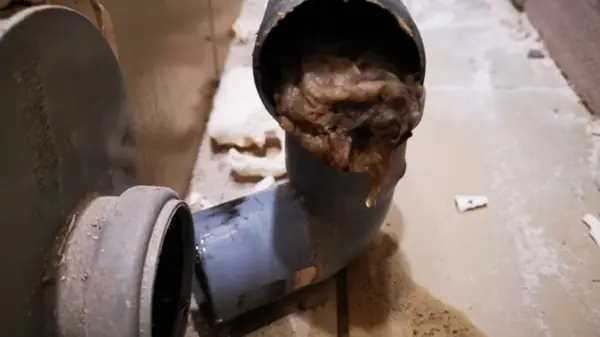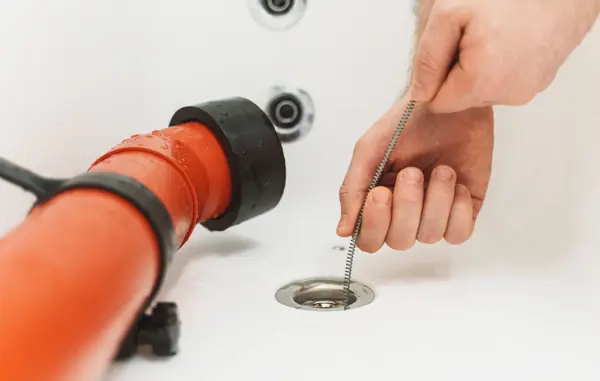Fixing a drain field isn’t exactly what most people dream of, but when something goes wrong, it becomes impossible to ignore. The soggy yard, strange smells, and backed-up plumbing are clear signs that something’s amiss underground. But here’s the thing—repairing a drain field isn’t just about swapping out a few pipes. It’s a complex process that involves understanding soil types, system layouts, and environmental factors.
Whether you’re dealing with an aging system or unexpected damage, there’s more to the repair than meets the eye. In this article, we’ll break down the essentials of drain field repair, making sense of the details so you can feel informed and confident about the next steps.
What are the common signs of a failing drain field?
A failing drain field can cause significant issues with your septic system, leading to unpleasant odors, health risks, and expensive repairs. Here are some common signs that your drain field may be failing:
- Slow-Draining Fixtures: If toilets, sinks, and drains drain slowly, it may indicate that the drain field cannot properly absorb and filter wastewater.
- Pooling or Puddling Water: Water pooling or puddling in the yard around the drain field, especially after heavy water use, is a clear sign that the field is saturated and unable to absorb wastewater efficiently.
- Odors: Foul smells, often described as sewage odors, can indicate that the drain field is not properly filtering the wastewater, causing it to back up and release odors.
- Lush or Green Grass Over the Drain Field: If the grass over the drain field is unusually lush or green, it may indicate that untreated wastewater rises to the surface, providing nutrients for the grass.
- Sewage Backup: A more serious sign of drain field failure is sewage backup into the home’s plumbing, which can occur if the septic tank or drain field is overloaded.
- Clogged or Leaking Pipes: Damaged or clogged pipes can lead to improperly distributed wastewater, causing failure in the drain field.
These signs suggest that the drain field is not functioning properly, and it’s essential to consult a professional to assess and repair the system before the situation worsens.
How long does a drain field typically last?
A drain field, also known as a leach field, typically lasts between 20 and 30 years, but its lifespan can vary based on several factors. Proper maintenance and usage play a significant role in determining how long the drain field will remain functional. Here are some factors that affect the lifespan of a drain field:
- Soil Type and Conditions: The soil type in your area can impact the drain field’s longevity. Sandy soils allow for better filtration and absorption of wastewater, while clay soils may hinder proper drainage and shorten the field’s lifespan.
- Septic Tank Maintenance: Regular maintenance of the septic tank is crucial. If the tank is not pumped regularly, solids can flow into the drain field, clogging the soil and pipes and significantly reducing the drain field’s effectiveness and lifespan.
- Water Usage: Overuse of water in a household can overload the septic system, putting excess strain on the drain field. Limiting water usage and spreading out large loads of water can help extend the life of the drain field.
- Proper Waste Disposal: Avoiding the disposal of non-biodegradable items, chemicals, or excessive grease can prevent clogging in the septic system, thus protecting the drain field.
- Environmental Factors: Factors like tree root intrusion or high water tables can damage the drain field over time, leading to premature failure.
Regular maintenance, proper usage, and prompt repairs when needed can help extend the life of your drain field and ensure the proper function of your septic system.
What factors affect the lifespan of a drain field?
The lifespan of a drain field (leach field) is influenced by several factors, many of which are related to how well the system is maintained and the environmental conditions around it. Here are the key factors that affect the longevity of a drain field:
- Soil Type and Drainage: The soil type in your area plays a significant role in the field’s effectiveness. Well-draining soils, such as sand or gravel, allow for better wastewater filtration, while dense, clay-rich soils can slow down absorption and lead to clogging, reducing the lifespan.
- Septic Tank Maintenance: Regular septic tank pumping is essential. If the tank is not properly maintained and cleaned, solids can overflow into the drain field, causing blockages and reducing its ability to filter wastewater efficiently.
- Water Usage: Excessive water usage strains the drain field, leading to overloading. Large amounts of water can saturate the field, prevent proper absorption, and accelerate its failure.
- Waste Disposal Practices: Disposing non-biodegradable items, chemicals, or grease down drains can clog the pipes and soil in the drain field, shortening its lifespan.
- Tree Roots: Roots from nearby trees can invade the drain field pipes, causing damage and clogging the system, which can lead to failure.
- Topography and Location: A high water table, flood-prone areas, or poor grading can lead to the saturation of the drain field, impacting its effectiveness over time.
Proper care, including regular inspections, maintenance, and limiting excessive water usage, can help maximize the lifespan of your drain field.
What are the environmental impacts of improper drain field repair?
Improper drain field repair can lead to several negative environmental impacts, affecting local ecosystems and public health. Here are the main environmental consequences of inadequate drain field repair:
- Water Contamination: A malfunctioning or improperly repaired drain field can lead to untreated wastewater leaking into the surrounding soil, which may eventually contaminate groundwater and local water supplies. This poses a significant risk to drinking water sources and can harm aquatic ecosystems.
- Soil Degradation: Wastewater that does not properly filter through the soil can cause soil compaction, reducing its ability to absorb and treat water. This can lead to further contamination and prevent the soil from functioning as a natural filter.
- Harm to Wildlife: Contaminated water can enter nearby rivers, streams, or wetlands, affecting aquatic life. Harmful bacteria, viruses, and chemicals in the wastewater can disrupt the balance of local ecosystems, harming fish, plants, and other wildlife.
- Odor and Air Pollution: Leaking wastewater from a poorly repaired drain field can emit foul odors, creating an unpleasant environment. In addition, the presence of untreated sewage can lead to the release of harmful gases such as methane.
- Health Hazards: Improper repair can allow for the spread of disease-causing pathogens, including bacteria and viruses, which can affect both humans and animals in the surrounding area.
Proper, timely drain field repair is crucial for preventing these environmental risks and maintaining the health of the surrounding ecosystem.
Entrust Your Drain Field Repair to an Expert
Whether it’s a minor repair or a complete overhaul, we have the skills and experience to get the job done right. Proper drain field repair and maintenance are essential to prevent costly damage, water contamination, and system failure. Trust Hi-Desert Plumbing for reliable, professional service and proactive solutions to extend the life of your septic system. Contact us today!




